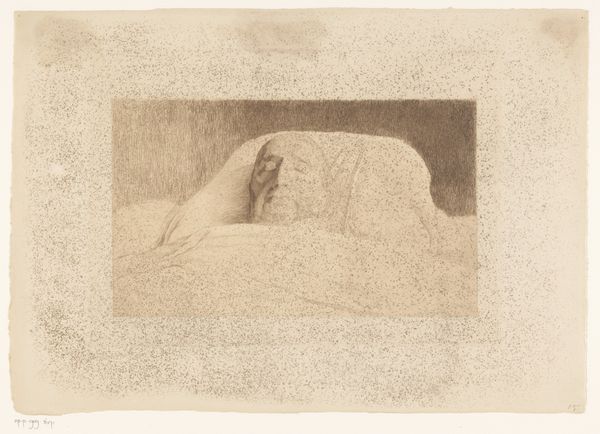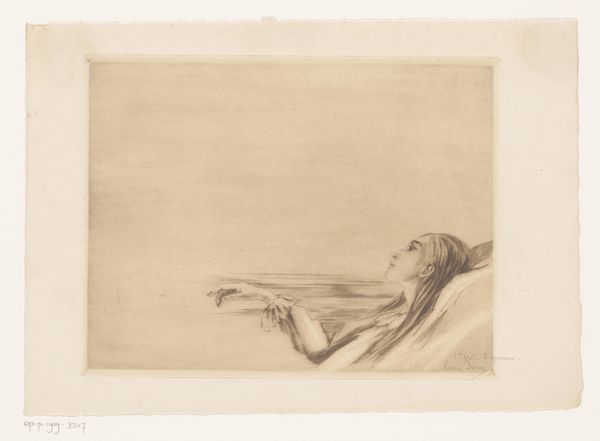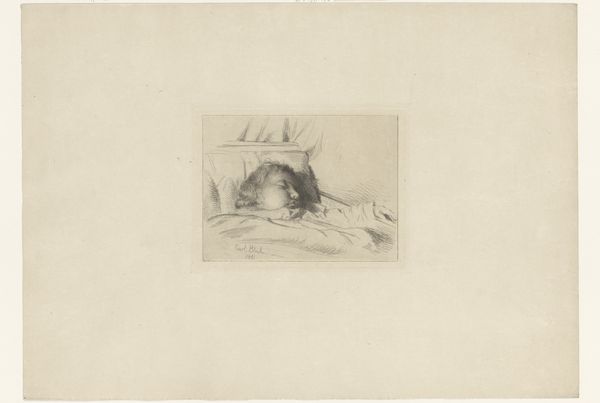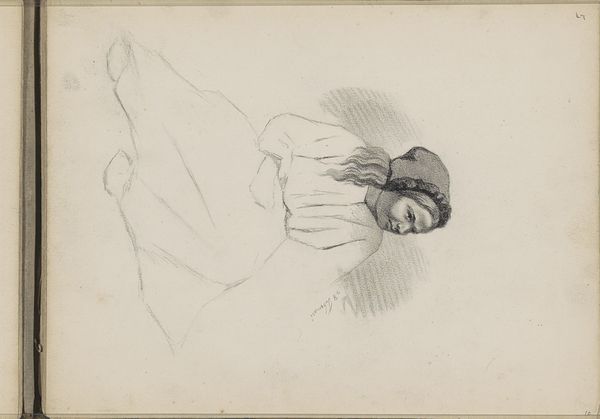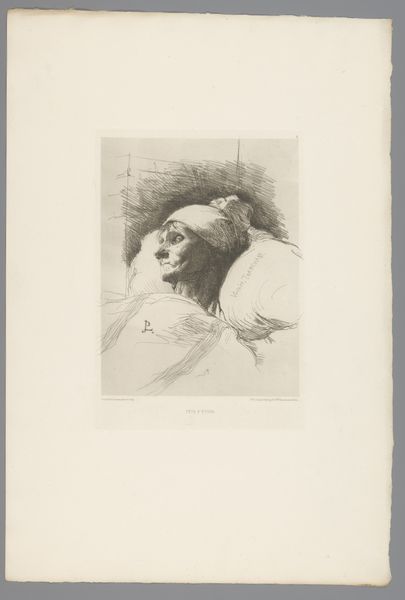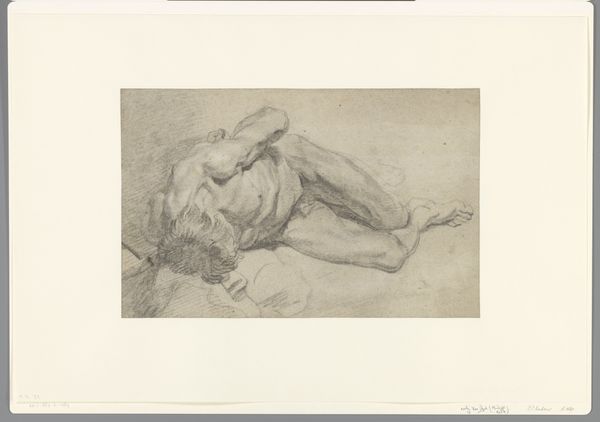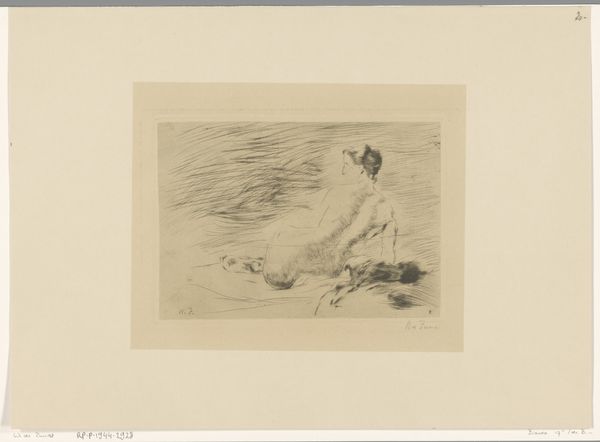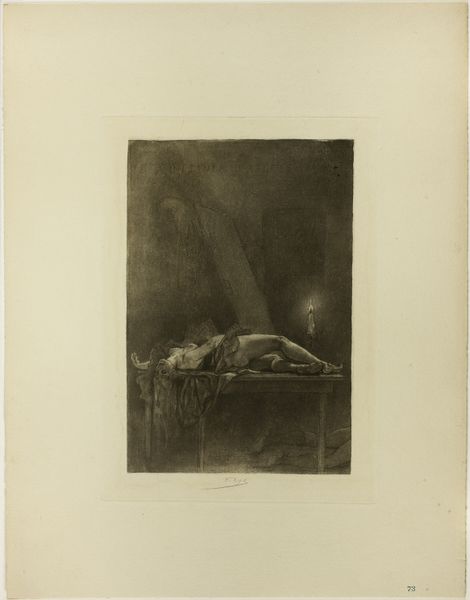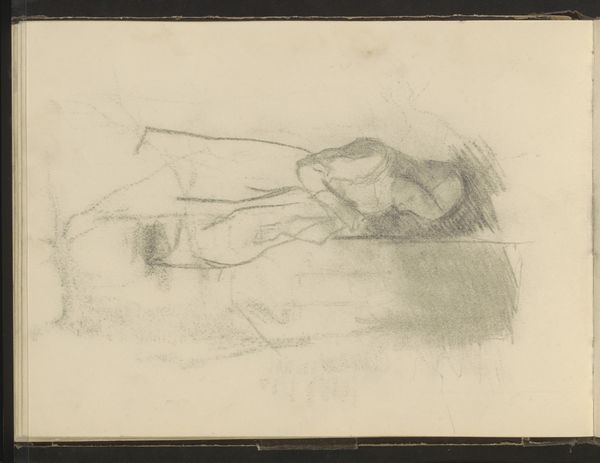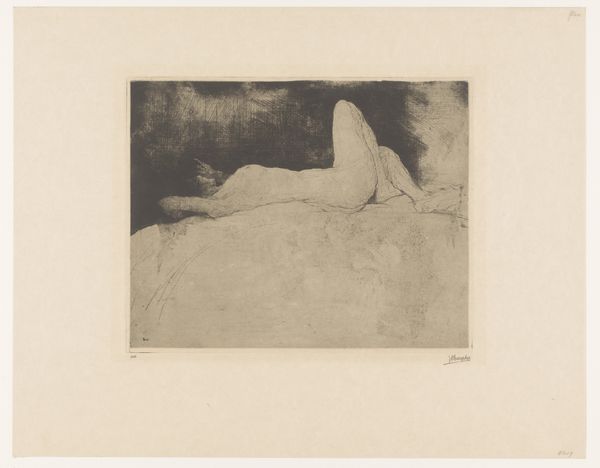
drawing, pencil
#
portrait
#
pencil drawn
#
drawing
#
vanitas
#
pencil drawing
#
intimism
#
pencil
#
pencil work
#
genre-painting
#
realism
Dimensions: height 140 mm, width 195 mm
Copyright: Rijks Museum: Open Domain
Curator: This pencil drawing, made in 1875 by Auguste Danse, is titled "Portret van een onbekende vrouw op haar sterfbed"—"Portrait of an unknown woman on her deathbed". It resides here at the Rijksmuseum. Editor: The first thing that strikes me is the delicate line work. It lends a certain vulnerability to the subject, doesn't it? A quiet, almost ethereal quality in rendering mortality. Curator: Precisely. Danse was operating within a society grappling with rapid social and technological changes. Genre paintings that explore intimate or difficult aspects of everyday life become a way of validating shared human experiences, particularly in times of uncertainty. Intimism gained purchase and perhaps something like this functions as memento mori. Editor: The composition, too, directs our gaze. The woman’s face is angled upwards, suggesting a sort of resignation. And that subtle play of light and shadow really enhances the feeling of somber realism. The formal handling reinforces this mood, this awareness. Curator: We should note the significance of producing this drawing in the context of healthcare during this period. Death and illness were very common public experiences that nonetheless had profound political resonance as they were slowly privatized, relocated to hospitals and other institutions of the era. Editor: I see what you mean. It's as if Danse were capturing a moment in societal transformation, freezing this person at this specific stage between a familiar life and… the great unknown. The drawing itself becomes an artifact of shifting cultural attitudes. Curator: And in presenting the piece within the institutional structure of a museum, we ask our modern viewers to consider our ongoing cultural dialogue with how death and dying are managed as socio-political phenomena today. Editor: It leaves you to wonder about the life lived by the woman, what the experience might have meant to witness her final repose. It has this effect. Curator: Ultimately, the drawing encourages us to consider the role of art in reflecting and shaping our understanding of both individual and collective experiences. Editor: A profound piece of visual poetry. I noticed nuances I had not thought about prior.
Comments
No comments
Be the first to comment and join the conversation on the ultimate creative platform.
